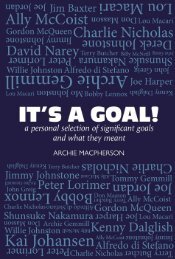Luath Scots Language Learner sampler
This new edition of the Luath Scots Language Learner featuring updated information is suitable as an introductory course or for those interested in reacquainting themselves with the language of childhood and grandparents. There are dictionaries and grammar books but this is the first-ever language course. The book assumes no prior knowledge on the reader's part. Starting from the most basic vocabulary and constructions, the reader is guided step-by-step through Scots vocabulary and the subtleties of grammar and idiom that distinguish Scots from English. An accompanying audio recording conveys the authentic pronunciation, especially important to readers from outside Scotland. The audio recording, which accompanies the Luath Scots Language Learner book, conveys the authentic pronunciation, especially important to readers from outside Scotland. It is suitable as an introductory course or for those interested in reacquainting themselves with the language of childhood and grandparents. There are dictionaries and grammar books but this is the first-ever language course. The book assumes no prior knowledge on the reader's part. Starting from the most basic vocabulary and constructions, the reader is guided step-by-step through Scots vocabulary and the subtleties of grammar and idiom that distinguish Scots from English.
This new edition of the Luath Scots Language Learner featuring updated information is suitable as an introductory course or for those interested in reacquainting themselves with the language of childhood and grandparents. There are dictionaries and grammar books but this is the first-ever language course. The book assumes no prior knowledge on the reader's part. Starting from the most basic vocabulary and constructions, the reader is guided step-by-step through Scots vocabulary and the subtleties of grammar and idiom that distinguish Scots from English. An accompanying audio recording conveys the authentic pronunciation, especially important to readers from outside Scotland.
The audio recording, which accompanies the Luath Scots Language Learner book, conveys the authentic pronunciation, especially important to readers from outside Scotland. It is suitable as an introductory course or for those interested in reacquainting themselves with the language of childhood and grandparents. There are dictionaries and grammar books but this is the first-ever language course. The book assumes no prior knowledge on the reader's part. Starting from the most basic vocabulary and constructions, the reader is guided step-by-step through Scots vocabulary and the subtleties of grammar and idiom that distinguish Scots from English.
- No tags were found...
Create successful ePaper yourself
Turn your PDF publications into a flip-book with our unique Google optimized e-Paper software.
INTRODUCTION<br />
was the ancestor of modern Welsh. In the north of Scotland other<br />
languages were spoken, and prominent among these was Pictish. In<br />
modern times only fragments of written Pictish remain; and it is not<br />
clear to us even what kind of language it was, or to which others it was<br />
related.<br />
After the Romans’ withdrawal from Britain, waves of invaders began<br />
to arrive, from Ireland, from the Low Countries, and from Scandinavia.<br />
In the west, the people whom the Romans called the Scoti 2 brought the<br />
Gaelic language to the part of Scotland that, nowadays, we call Argyll.<br />
In the east, the Anglo-Saxon tongue came to what is now South East<br />
Scotland, after Ida Eoppason settled in Bamburgh in RQT CE. He and his<br />
successors established the ancient kingdom of Northumbria between<br />
the rivers Forth and Humber, albeit to have it eventually captured by<br />
the Danes in the ninth century. Although Anglo-Saxon was the ancestor<br />
of both <strong>Scots</strong> and English, there were substantial differences between<br />
the speech of the Angles, who settled in Lothian and Northumbria, and<br />
that of the Saxons who settled further south. This is one of the sources<br />
of the differences between <strong>Scots</strong> and English as we know them today.<br />
During the so-called Dark Ages, the territory where Gaelic was spoken<br />
widened. By the eleventh century, it was the language of the monarch<br />
and the court, and was spoken throughout what we know today as<br />
Scotland, with two exceptions. Those exceptions were Lothian (which<br />
did actually have a Gaelic-speaking minority and which had continued<br />
under its own ruler following the Danish conquest of Northumbria);<br />
and Orkney, Shetland, and part of Caithness, which at the time were<br />
all Norse possessions. Lothian was finally annexed by Scotland in the<br />
eleventh century.<br />
However, the eleventh century also saw the marriage of Malcolm ááá=to<br />
a wife from England, and by the end of the twelfth century the<br />
language of the monarchy had changed and was a language derived<br />
2 The derivation of the name Scoti is unclear, although it is<br />
probably not a name by which the people concerned identified<br />
themselves. Even so, the name Scoti is the basis of the name<br />
‘Scotland’ that we use today.<br />
R


















